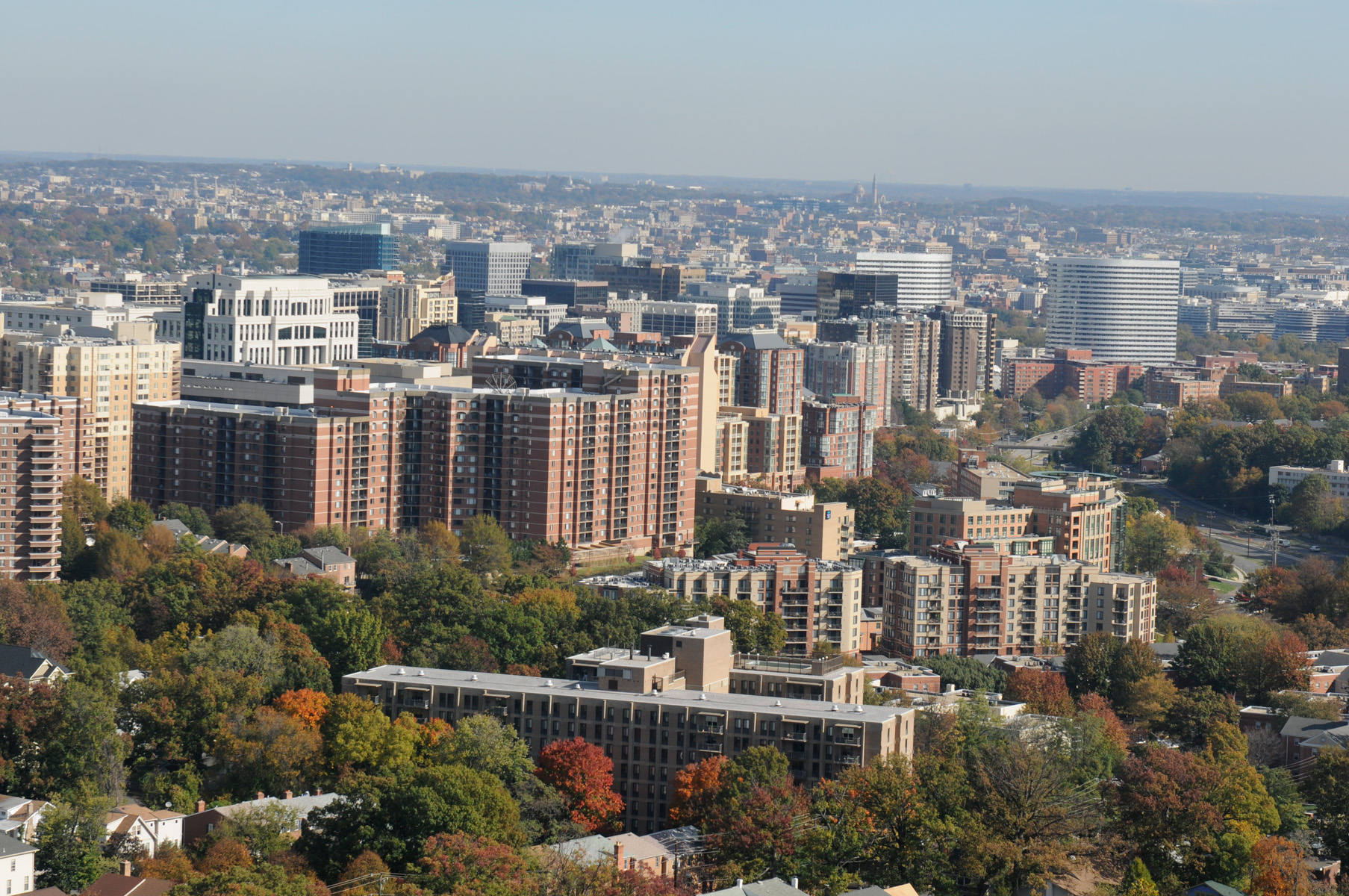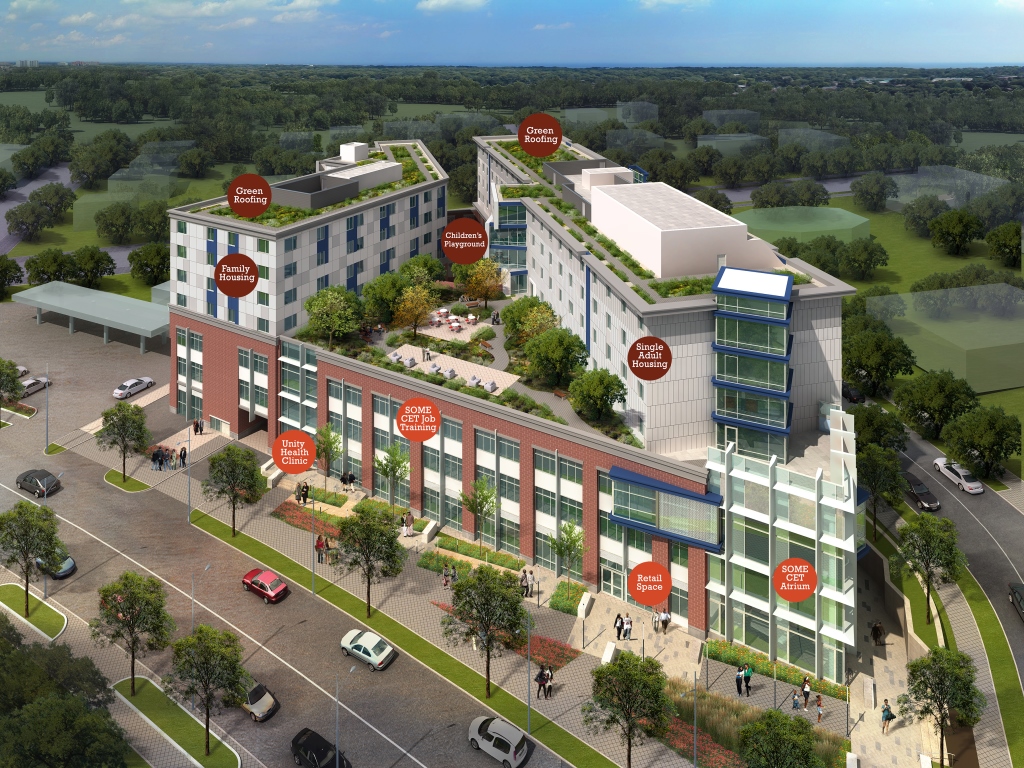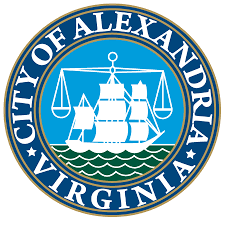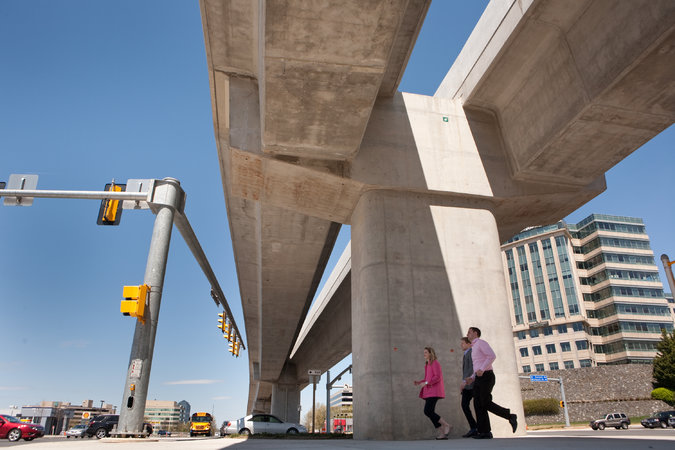The Promise—and Realities?—of Mixed-Income Communities
By Lisa Sturtevant, PhD
Lisa Sturtevant & Associates

After decades of public housing development that segregated people by race and income and led to pockets of enduring concentrated poverty – housing advocates, government officials and others now promote the development of mixed-income housing to help meet affordable housing needs. With the release by HUD of the affirmatively furthering fair housing (AFFH) rule, there is renewed attention to the feasibility and effectiveness of fostering communities that include households of all incomes. Through the HOPE VI and Choice Neighborhoods programs, the Federal government supports the development of mixed-income housing developments. Outside of these Federal programs, developers have found creative ways to build communities that include housing affordable to a range of incomes. Some neighborhoods have become mixed-income through rapid gentrification and private investment.
Why focus on creating and sustaining mixed-income communities? What approaches can be most successful at creating and sustaining affordable housing opportunities and creating truly integrated neighborhoods?
There is no universally-accepted or legal definition of “mixed-income housing.” But, in general, the term refers to developments that include below-market-price housing units that are affordable to very low- and low-income households along with housing that is market-priced. At a larger geographic scale, mixed-income communities or neighborhoods are distinct geographic areas where there is housing affordable to people with a range of incomes. The goals of mixed-income housing strategies are to reduce poverty among low-income families, facilitate income and racial integration and contribute to urban revitalization.
Conway Center (Rendering courtesy of Wiencek + Associates, Architects + Planners and SOME)
There is a fair amount of research on the benefits of mixed-income communities, including recent compelling research on the importance of neighborhood characteristics on economic mobility. However, there is also debate (see also this piece in the Atlantic) about how well the theoretical benefits of mixed-income housing play out in reality. The specific characteristics of the communities—and the ways in which they have developed—matter a lot.
 In a 2011 review of the research on the impacts on low-income families, researchers at the Urban Institute summarize the wide range of positive outcomes associated with living in mixed income communities. Low-income families in mixed-income communities have access to higher-quality services and better schools, and live in safer neighborhoods and better-quality housing compared to other low-income families. There are positive health and education outcomes for families living in mixed-income communities, through the research is inconclusive on the extent of these benefits. Similarly, there is some evidence of improved employment outcomes for families but, overall, the evidence has been mixed on the effect of mixed-income communities on employment and wages.
In a 2011 review of the research on the impacts on low-income families, researchers at the Urban Institute summarize the wide range of positive outcomes associated with living in mixed income communities. Low-income families in mixed-income communities have access to higher-quality services and better schools, and live in safer neighborhoods and better-quality housing compared to other low-income families. There are positive health and education outcomes for families living in mixed-income communities, through the research is inconclusive on the extent of these benefits. Similarly, there is some evidence of improved employment outcomes for families but, overall, the evidence has been mixed on the effect of mixed-income communities on employment and wages.
Research documenting the benefits of mixed-income communities generally has focused on characteristics of the neighborhood, rather than on the benefits that might specifically come from living in a building with a mix of incomes. This issue of mixed-income neighborhood versus mixed-income building is an issue that came to a confrontational head last year over a project in New York City and has also been debated here in Washington DC.
 Several things seem to be important if the benefits of mixed-income communities are to be fully realized. First, researchers have found that aside from the characteristics of the community, the attributes of families themselves are often the most important determinant of whether a family benefits from living in a mixed-income community. So, mixed-income housing is not necessarily a universal remedy for problems related to concentrated poverty.
Several things seem to be important if the benefits of mixed-income communities are to be fully realized. First, researchers have found that aside from the characteristics of the community, the attributes of families themselves are often the most important determinant of whether a family benefits from living in a mixed-income community. So, mixed-income housing is not necessarily a universal remedy for problems related to concentrated poverty.
Second, based on the existing research, mixed-income communities haven’t worked as well when there is too much of a difference between the incomes of the highest and lowest income households. Some have stipulated that it is important that communities have a middle income tier between the highest and lowest incomes to promote community stability and to build connections.

Heritage Crossing
Third, the majority of the research on the benefits of mixed-income communities focuses on specific HOPE VI redevelopment projects or on households that move to better neighborhoods through a housing voucher program, and specifically the Moving to Opportunity (MTO) program. But mixed-income communities can develop in a variety of ways. We need more information about how low-income households—indeed, all households—are impacted by living in a place that includes people from diverse incomes and backgrounds.
Across the Washington DC area, there are examples of mixed-income communities that are arising under very different circumstances:
Mixed-Income through Gentrification: There are some neighborhoods in the District of Columbia that seem to be the very picture of mixed-income, containing households with very low incomes, as well as those with very high incomes. For example, Logan Circle, Bloomingdale, U Street, and Mount Vernon Square are some of the most socioeconomically diverse neighborhoods in the city. This mix of incomes at the neighborhood level came about not through public redevelopment efforts but rather through rapid gentrification and private investment. On paper, then, these neighborhoods look like mixed-income communities. But it is not clear that the presumed benefits of mixed-income neighborhoods have been realized by low-income families living in them.
Mixed-Income through Public-Private Partnerships: Throughout the region, private developers have worked with the local housing authority to develop mixed-income housing on publicly-owned land.  The City of Alexandria has, perhaps, the most notable examples of this type of mixed-income development. The developer EYA, in particular, has worked extensively with the City of Alexandria Redevelopment and Housing Authority to redevelop public housing buildings into mixed-income communities. (Full disclosure – I live in an EYA development in Alexandria.) The process in Alexandria has not always been smooth, and there has not been a comprehensive study of the impact of these mixed-income communities in in the city. However, this type of public-private partnership and use of publicly-owned land likely represents a way forward locally for the development of mixed-income communities.
The City of Alexandria has, perhaps, the most notable examples of this type of mixed-income development. The developer EYA, in particular, has worked extensively with the City of Alexandria Redevelopment and Housing Authority to redevelop public housing buildings into mixed-income communities. (Full disclosure – I live in an EYA development in Alexandria.) The process in Alexandria has not always been smooth, and there has not been a comprehensive study of the impact of these mixed-income communities in in the city. However, this type of public-private partnership and use of publicly-owned land likely represents a way forward locally for the development of mixed-income communities.
Mixed-Income through Inclusionary Policy: A third way that mixed-income communities have been developed in the Washington DC area is through local inclusionary zoning policies. Fairfax County amended its comprehensive plan to define new affordability requirements in Tyson’s Corner. In exchange for increased density, residential developers are required to include in new buildings housing that is affordable to households at various incomes, up to 120 percent of the area median income.  Through this policy, Fairfax will be incentivizing the development of truly mixed-income buildings—including individuals and families at the low and high end of the income spectrums—all in a fast-growing, transit-accessible area. It remains to be seen how well the policy works at building truly integrated communities and how low-income families will benefits.
Through this policy, Fairfax will be incentivizing the development of truly mixed-income buildings—including individuals and families at the low and high end of the income spectrums—all in a fast-growing, transit-accessible area. It remains to be seen how well the policy works at building truly integrated communities and how low-income families will benefits.
There is no doubt that we cannot return to the day when housing low to very low income families is concentrated in a small number of neighborhoods in the region. Fostering the development of communities that include housing affordable to households all along the income spectrum is important for promoting economic and racial integration across the region and expanding opportunities for low-income individuals and families. However, it is worth giving more critical thought to how we create and sustain mixed-income communities to better understand how everyone can benefit.






Leave a Reply
Want to join the discussion?Feel free to contribute!